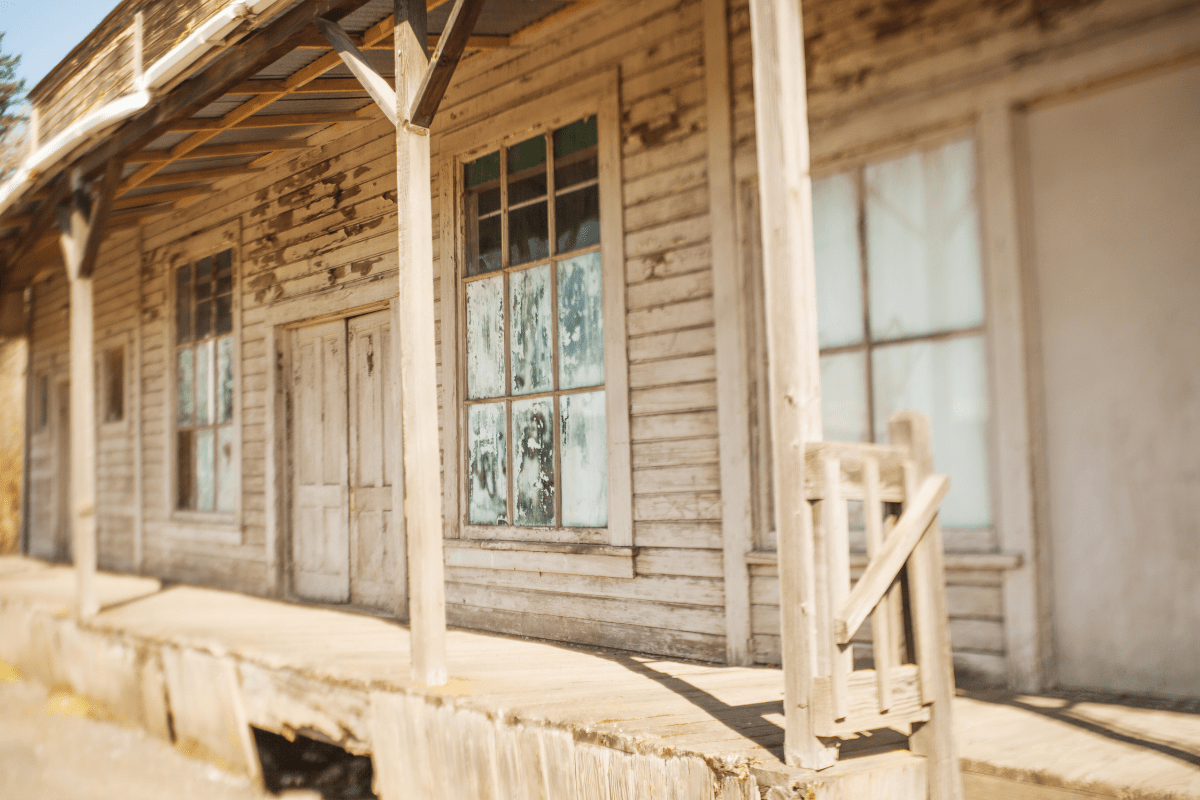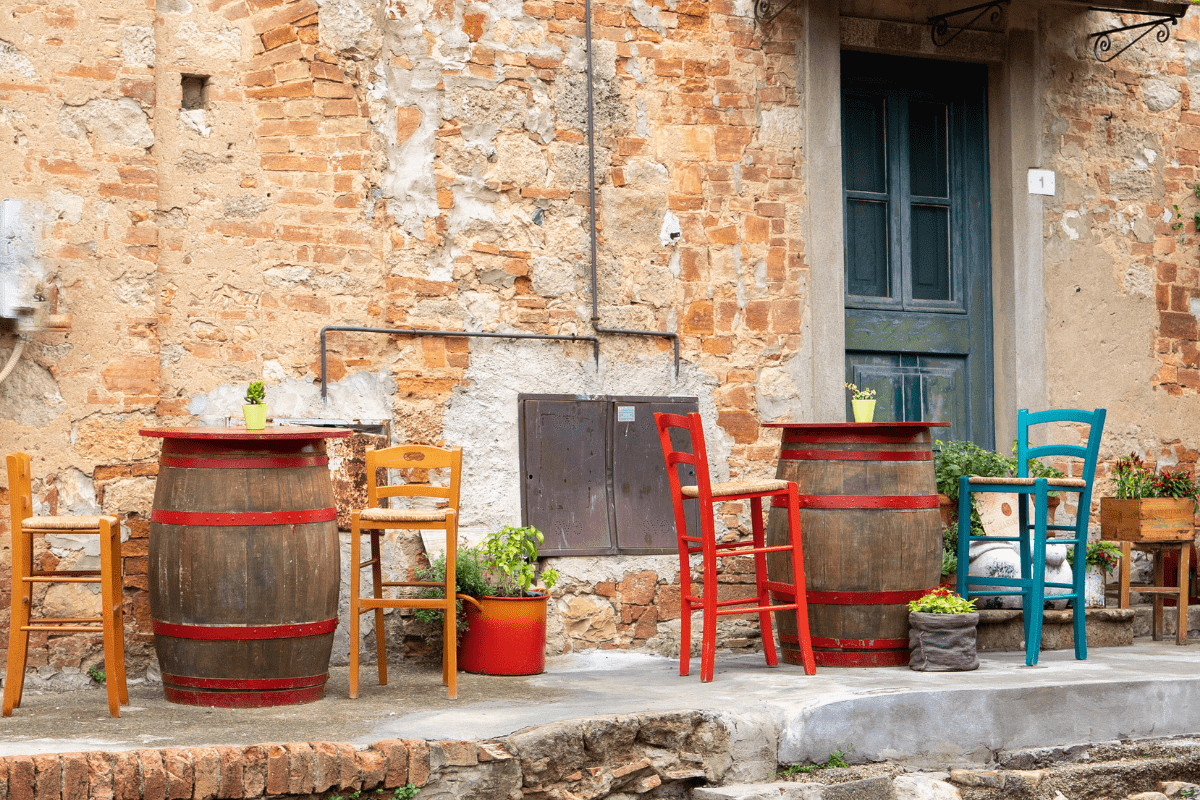Let me tell you something that surprised me: Oklahoma has 22 National Historic Landmarks and over 6 million people visit its major historic sites every year. Most folks think of the state as flyover country (sorry, Oklahomans), but it turns out it has witnessed more pivotal American moments than a Ken Burns documentary marathon.
The heavy hitters you can't miss
Before diving into the fun stuff like giant concrete whales and soda bottle sculptures, we need to talk about the Oklahoma City National Memorial & Museum. This site draws 350,000 visitors annually, and once you're standing in that Field of Empty Chairs… one for each of the 168 victims from April 19, 1995… you understand why.
The outdoor memorial stays open 24/7 and admission is completely free, which feels right somehow. Visit after dark when the chairs are illuminated and the reflection pool mirrors the lights. It's haunting in the way important memorials should be. The museum itself documents both the bombing and Oklahoma City's recovery with interactive exhibits that manage to honor victims while celebrating resilience. Since opening, over 6 million people have walked through these grounds, making it Oklahoma's most visited historic site.
Ancient trade empires hiding in plain sight
Here's what blew my mind: the Spiro Mounds Archaeological Center near Spiro represents the only prehistoric archaeological site in Oklahoma that's open to the public, and it controlled trade networks from the Gulf of California to the Great Lakes between 800 and 1450 AD. That's right, while medieval Europeans were still figuring out windmills, the Mississippian culture at Spiro was running North America's Amazon Prime.
The artifacts from this site now live in 65 museums worldwide, including the Louvre and British Museum. Archaeologists nicknamed it the "King Tut of the Arkansas Valley" after discovering elaborate feather capes, carved shells, and copper plates that make you reconsider everything you thought you knew about pre-Columbian America. Best part? Admission is just four bucks. You can explore 150 acres with nearly two miles of interpreted trails, and the visitor center displays artifacts that prove these folks were trading with basically everyone on the continent. It's open Wednesday through Saturday, which seems random but whatever, I don't make the rules.
The Chickasaw Cultural Center in Sulphur cost $40 million and took six years to build, resulting in a 184-acre campus that feels like Disney World for Native American history (in the best way possible). The Chikasha Inchokka' Traditional Village features authentic dwellings where you can watch daily stomp dance demonstrations. The Anoli' Theater has 350 seats facing a wraparound screen that's 2,700 square feet… basically IMAX for tribal history. Meanwhile, the Cherokee Heritage Center near Tahlequah is temporarily closed for renovations, but when it's open, it marks the western terminus of the Trail of Tears with recreated 1710 villages and the grounds of the Cherokee Female Seminary, which was the first institution of higher learning for women west of the Mississippi.
Then there's Sequoyah's Cabin near Sallisaw, preserving the one-room log home of the Cherokee genius who single-handedly created the Cherokee syllabary in 1821. Within months of his invention, the Cherokee Nation achieved nearly 100% literacy, surpassing their European-American neighbors. The original 1829 cabin sits protected by a stone shelter the WPA built in 1936, because even the WPA knew this place was special.
Route 66: More than just a song lyric
Oklahoma has over 400 drivable miles of Route 66, more than any other state, with over 200 properties on the National Register of Historic Places. The Mother Road through Oklahoma is basically a 400-mile outdoor museum of Americana, complete with giant animals and architectural oddities.
The whale that launched a thousand selfies
The Blue Whale of Catoosa might be the most photographed roadside attraction nobody's heard of. Hugh Davis built this 80-foot-long concrete whale in 1972 as an anniversary gift for his wife Zelta, who collected whale figurines. Because nothing says "I love you" like a massive concrete marine mammal, right?
After closing in 1988, the whale sat deteriorating until community volunteers restored it between 1997 and 2002. In 2020, Catoosa purchased the site and secured $1.8 million in state grants for a welcome center and enhanced facilities. The whale now hosts special events and remains free to visit, proving that sometimes the best things in life really are giant blue whales.
The Round Barn in Arcadia predates Route 66 by nearly 30 years, built in 1898 using native bur oak. This 60-foot diameter architectural marvel once hosted community dances on its second floor, because apparently our ancestors were way cooler than us. When the roof collapsed in 1988, a group of retirees calling themselves the "over-the-hill gang" spent four years restoring it. It's now the most photographed building on Route 66, which is saying something considering the competition.
Modern meets mother road
Not everything on Route 66 is vintage. Pops in Arcadia, built in 2007, features a 66-foot-tall LED-lit soda bottle that's visible for miles. Natural gas mogul Aubrey McClendon funded this ultra-modern cantilevered structure that now serves 475,000 visitors annually. They stock 700 varieties of soda from around the world, including bacon-flavored pop and other crimes against carbonation.
The Oklahoma Route 66 Museum in Clinton has been operated by the Oklahoma Historical Society since 1995. It features interactive exhibits including a 1950s diner recreation and what they claim is the "world's largest curio cabinet." The audio tour, narrated by Route 66 authority Michael Wallis, guides you through decade-by-decade displays with period music and authentic roadside memorabilia that'll make you nostalgic for road trips you never took.
Frontier forts that shaped the West
Fort Gibson stands as Oklahoma's first U.S. military post, established in 1824 to keep peace between the Cherokee and Osage tribes. During the Trail of Tears, it served as removal commission headquarters, witnessing the arrival of Creek and Seminole survivors. At the height of Indian removal, it maintained the nation's largest garrison.
The fort's 80 acres contain 29 historic buildings, including a WPA-reconstructed stockade that looks exactly like what you'd imagine a frontier fort should look like. The roster of officers stationed here reads like a who's who of American military history: Stephen Watts Kearny, Jefferson Davis, and Zachary Taylor all served at Fort Gibson. During the Civil War, Union forces renamed it Fort Blunt and launched the successful Battle of Honey Springs from its grounds. The site offers guided programs that bring this complex history to life.
Where Geronimo spent his final years
Fort Sill near Lawton remains the only frontier fort that's still an active Army installation. Established January 8, 1869, by General Philip H. Sheridan, the fort employed frontier scouts including "Buffalo Bill" Cody and "Wild Bill" Hickok. All four Buffalo Soldier regiments served here between 1867 and 1894, contributing to the fort's rich military heritage.
Apache leader Geronimo spent his final years imprisoned on these grounds, and his grave still attracts thousands of visitors annually who leave coins and offerings. Today's U.S. Army Field Artillery School continues the fort's military mission while the Fort Sill Museum occupies 46 historic buildings, making it the largest museum complex in the Army. The museum displays everything from frontier cavalry equipment to modern artillery on the Cannon Walk, and yes, you can take museum tours if you call ahead.
When oil built palaces on the prairie
The Glenn Pool discovery near present-day Glenpool changed everything on November 22, 1905. Wildcatters struck oil, and within two years the field was producing 43.52 million barrels. This single discovery created more wealth than the California Gold Rush and Nevada Silver Rush combined, launching the careers of Harry Sinclair and J. Paul Getty while establishing Tulsa as the "Oil Capital of the World."
Frank Phillips's personal wonderland
Woolaroc Museum and Wildlife Preserve near Bartlesville preserves oil baron Frank Phillips's 3,700-acre retreat. The 50,000-square-foot museum houses one of America's finest Western art collections alongside the world's largest Colt firearms display. Will Rogers called it "the most unique place in the United States," and Will Rogers was not easily impressed.
The estate includes Phillips's original lodge where he entertained presidents and titans of industry, probably over drinks that cost more than my car. The grounds feature a bison herd dating to 1926 and the "Woolaroc" aircraft that won the 1927 Dole Air Race. Following Phillips 66's company museum closure in 2024, Woolaroc received a $5 million donation to preserve additional corporate artifacts. You can visit this remarkable estate year-round, though spring and fall offer the best weather for exploring the grounds.
The E.W. Marland Mansion in Ponca City showcases what happens when oil money meets Mediterranean fantasies. This 55-room palace contains 43,561 square feet of pure excess. Oil baron and future Governor Ernest Marland spent $5.5 million in 1928 (about $80 million today) creating rooms with gold leaf ceilings and Waterford crystal chandeliers inspired by Florence's Palazzo Davanzati. It's a National Historic Landmark that makes you understand why the 1920s were called the Roaring Twenties.
The tragedy of Black Wall Street
Tulsa's Greenwood District, known as "Black Wall Street," represented African American achievement during the oil boom era. By 1920, over 190 businesses created one of America's most prosperous Black communities, with 10,000 residents including renowned surgeon A.C. Jackson and numerous oil millionaires.
Then came the 1921 Tulsa Race Massacre. In just two days, 35 blocks were destroyed, up to 300 people were killed, and 10,000 were left homeless. Today's ongoing revitalization efforts and National Historic Landmark designation ensure this history remains visible and honored. The Greenwood Rising museum tells this story with the gravity it deserves.
Civil War battles you've never heard of
The Battle of Honey Springs near Checotah was Indian Territory's largest Civil War engagement. On July 17, 1863, about 9,000 troops clashed in what historians call the "Gettysburg of the Trans-Mississippi." This was the first battle where African American troops saw combat, and the largest where white soldiers were actually the minority… Native Americans comprised 80% of forces from six different nations.
The 1,100-acre National Historic Landmark site now features visitor facilities and biennial reenactments. Union General James Blunt's victory here secured Indian Territory for the remainder of the war. The Cabin Creek Battlefield witnessed another significant engagement on September 19, 1864, when Confederate generals captured 130 Union supply wagons in Indian Territory's last major Civil War battle.
Planning your Oklahoma history road trip
Ready to explore? Here's what you need to know to make the most of Oklahoma's historic sites:
When to visit
The best times for outdoor sites like Spiro Mounds' two-mile trail or Fort Gibson's 80 acres are spring and fall when Oklahoma weather actually cooperates. Summer heat makes indoor attractions like the National Cowboy & Western Heritage Museum's 28,000 artifacts more appealing, unless you enjoy sweating through your historical education.
For the Oklahoma City National Memorial, evening visits offer something special with the illumination creating particularly moving moments. The outdoor portion stays free and accessible 24 hours daily, so you can visit whenever the mood strikes.
What you'll spend
Here's the damage to your wallet:
- Spiro Mounds: $4 (best deal)
- Fort Gibson: $5
- Oklahoma Route 66 Museum: $7
- Chickasaw Cultural Center: $10
- Woolaroc Museum: $14
- OKC Memorial Museum: $15
- National Cowboy Museum: $25 (most expensive)
Most sites offer military and senior discounts, and an Oklahoma Historical Society membership provides free admission to multiple locations. Family packages are available at many sites, making it easier to drag the kids along for some education disguised as fun.
Making it accessible
Most major sites are wheelchair accessible, with the National Cowboy Museum even maintaining Autism Center certification. Group tours typically need two to three weeks advance booking, so don't show up with a bus full of fourth-graders expecting immediate entry.
Sites near Tulsa and Oklahoma City can easily be combined into multi-day itineraries. The Route 66 attractions make perfect stops on a longer road trip, especially if you're already driving across Oklahoma anyway.
Why Oklahoma's history matters more than you think
Oklahoma sits at every major intersection of American history: where Native nations met European expansion, where oil wealth funded architectural monuments, where Route 66 connected the coasts, and where the frontier became the modern West. From Spiro's thousand-year-old trade networks to Pops' 21st-century roadside architecture, these sites show Oklahoma's continuous reinvention while preserving the stories that shaped our nation.
The state's 22 National Historic Landmarks anchor hundreds of additional sites that transform interstate exits and small-town squares into portals to American history. And honestly? The modest admission fees deliver experiences worth far more than what you'll pay. Whether you're into ancient civilizations, frontier military history, architectural excess, or roadside Americana, Oklahoma's got something that'll make you reconsider what you thought you knew about the heartland.
So next time you're driving through what some call "flyover country," maybe slow down a bit. Stop at that giant blue whale, explore those ancient mounds, or stand in the Field of Empty Chairs at sunset. Oklahoma's historic sites aren't just preserving the past… they're revealing the complex, tragic, triumphant, and occasionally weird story of how America became America. And that's worth way more than four bucks admission.





